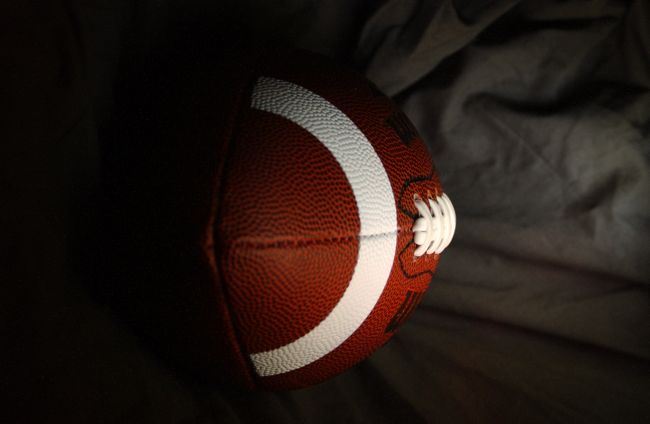
GPP for High School Freshmen
My name is Mark McLaughlin and for 2 years, I was the strength and conditioning football coach at a local high school. Currently, I own my own strength and conditioning center and these athletes train with me there. Before I left, however, I realized there was no system for preparing freshman for the upcoming years of football. They were under-trained and basically ignored until they made varsity. The following addresses this issue and how I dealt with this lack of preparedness.
This article will deal with incoming freshman in high school (ages 13-15) and how their general physical preparation (GPP) period should begin. Kids this age are void of a lot of the basic principles to begin lifting (lack of GPP, relative strength) and should not begin a serious weight training regime until certain strengths are in place. So, the question is how to get them prepared. Jim Wendler was posed a similar question several months ago. Jim’s answer was very basic. Before anyone should begin lifting, they should be able to perform the following body weight exercises: 50 pushups , 100 situps, 25 parallel dips, and 10 strict pullups. This got me thinking about our new group of incoming freshman. I began a test to see how effective this method would be. On the first day, 12 freshmen reported, and I laid out my new GPP prep cycle and how it would be implemented and the reasons behind this type of training. We tested all of the athletes on the four core exercises. No one reached any of the goals. The question became, "What kind of workouts would we implement to reach these goals?" Body weight exercises and medicine ball work would be performed 3-4 days per week, and Charlie Francis tempo runs would be implanted 2-3 days per week.
Warmup
4 sets of 30 seconds each
- Jumping jacks
- Burpees
- Star jumps
- Shuffle steps
- Abs 3 x 15
Workout
3-4 sets of 12-15 reps per exercise
- Pushups
- Dips
- Pullups
- Body weight squats
- Lunges
- Rainbows
- Step ups
- Hovers
- Skywalkers
- Broad jumps
- Reverse Hyper (20-40 pound max)
Medicine Ball Training
2-4 sets of 15-50 throws using 4-8 pound medicine ball
- Chest pass
- Side-side
- Overhand/underhand
- Sit throws with partner
- Russian twist
- Explosive medicine ball throws forward/backward 2 x 10
After four weeks of doing this training regime we retested the athletes. Basically, 5 out of the 12 kids met the goals. With this cycle completed, these five athletes were sufficiently prepared to begin implementing one barbell lift on each of the four days (day 1-squat, day 2-bench, day 3-deadlift, day 4-bench).
The following days would look like this as far as weight progression:
Squat
- 4 x 6 at 95 pounds - Week 1
- 4 x 5 at 115 pounds - Week 2
- 3 x 8 at 75 pounds - Week 3
- 5 x 3 at 135 pounds - Week 4
Deadlift
- 10 x 1 at 135 pounds
- 8 x 1 at 185 pounds
- 8 x 1 at 205 pounds
- 6 x 1 at 225 pounds
Accessory work for these two days consisted of:
- Band Good Mornings 3 x 15
- Band pullthrough 3 x 15
- Reverse hyper 3 x 10
- Explosive medicine ball throws 2 x 10 (6-8 pound balls)
- Abs 8-15 sets of 25
Bench Day 1
- 4 x 6 at 75 pounds - Week 1
- 4 x 5 at 95 pounds - Week 2
- 3 x 8 at 65 pounds - Week 3
- 5 x 3 at 115 pounds - Week 4
Bench Day 2
- 3 x 10 at 75 pounds
- 3 x 10 at 85 pounds
- 3 x 10 at 95 pounds
- 3 x 10 at 65 pounds
Accessory work for these two days consisted of:
- Pushups 3 x 15
- Pullups 3 x 15
- Dips 3 x 10
- Chest supported row 3 x 15
- Abs 8-15 sets of 25
We did the barbell cycle for 8 weeks, and then we completed a test day on dead lift and bench press. The results speak for themselves:
- Athlete #1: deadlift - 355/bench press - 205
- Athlete #2: deadlift - 345/bench press - 185
- Athlete #3: deadlift - 275/bench press - 165
- Athlete #4: deadlift - 275/bench press - 145
“But always reinforce correct technique for the purpose of developing positive self-esteem. Give athletes praise for their efforts - never criticize or ridicule. The correct selection of specific training elements in addition to practical skill tests or indicators ensures successful completion by the participant. To build a powerful image of self you structure a string of successes.” –Charlie Francis from CFTS










